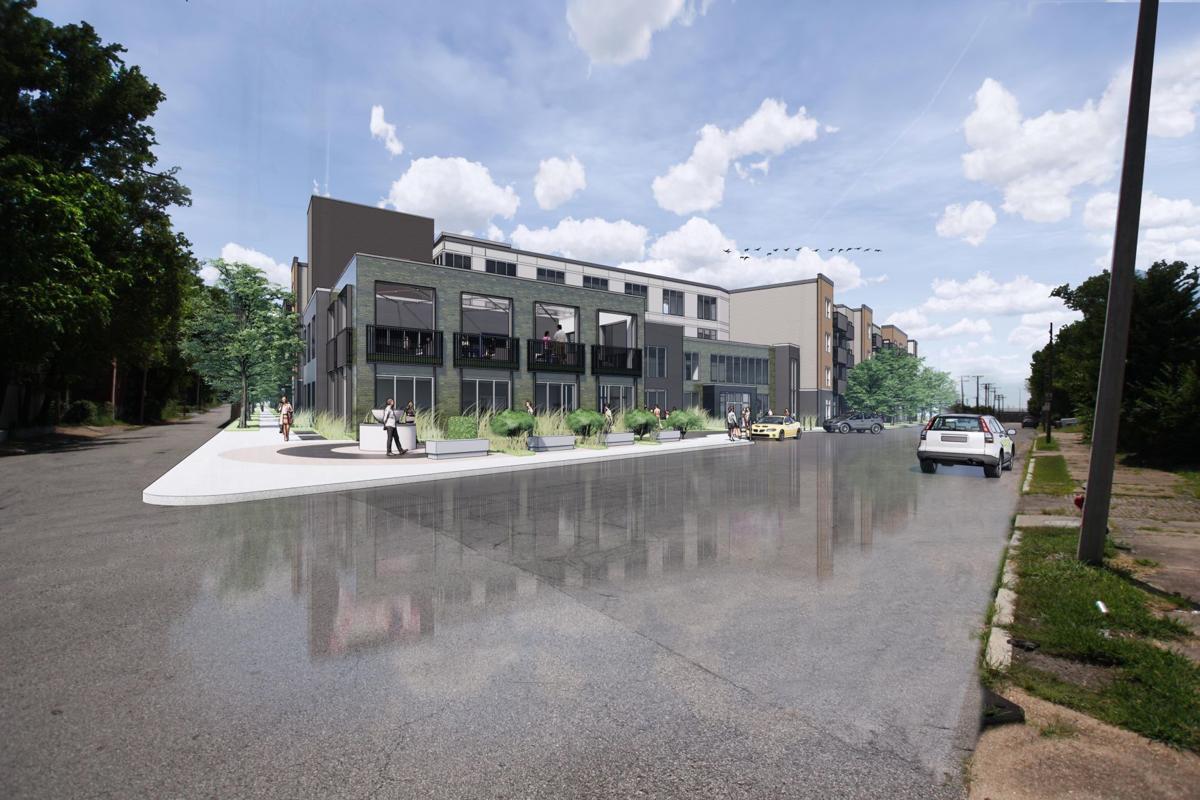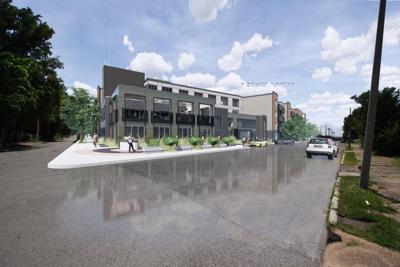ST. LOUIS ŌĆö Many of the regionŌĆÖs biggest development projects are getting a lift from a new federal law that lets investors reduce their tax liability by putting capital gains into projects in areas leaders have targeted for years.
Throughout the region, developers with projects in eligible areas, known as Opportunity Zones, are using the new tax break provision to raise more money. At the same time, those developers say, the program is helping attract new investors to ├█č┐┤½├Į.
ŌĆ£I think itŌĆÖs bringing people into the ├█č┐┤½├Į real estate investment community that either havenŌĆÖt been here, or maybe have been here in a limited way,ŌĆØ said Brian Pratt, president of Green Street ├█č┐┤½├Į, which is in discussions with outside investors about using Opportunity Zone funds to raise capital for both its 300-unit apartment building in the Grove and the Armory office project along Highway 40 (Interstate 64).
People are also reading…
The Opportunity Zone program, which has had bipartisan support, was added to the 2017 tax law passed by the then Republican-controlled Congress. It allowed states to designate areas with higher-than-average poverty rates or lower-than-average incomes as Opportunity Zones.
City and county leaders nominated the areas nearly two years ago, reflecting some of their development priorities: downtown, the Cortex business district, the Grove, the Dutchtown neighborhood, the near north side and riverfront, the Martin Luther King Boulevard corridor, ├█č┐┤½├Į-Lambert International Airport, Wellston and the plant science district in Creve Coeur.
The final regulations released last month appear to make the program as easy to use as possible for developers and investors, said Michael Donovan, head of Lewis RiceŌĆÖs tax practice.
ŌĆ£ThereŌĆÖs been a tremendous interest from the development community in using Opportunity Zone funds,ŌĆØ he said. ŌĆ£The final rules have been extremely favorable in clarifying a number of issues that people had worried about.ŌĆØ
Investors with capital gains ŌĆö profits on the sale of property or investments ŌĆö can buy in to projects within the zones and defer taxes on those gains for 10 years. If they hold the investments for seven years, they can reduce their taxes by 15%. On top of that, any gains from the sale of the new investment is tax-free, as long as the investors keep their money invested for at least 10 years.
Rather than putting their money back into stocks or other securities, more investors are putting their earnings from the market into Opportunity Zones for the tax advantages, said Luke Pope, who leads national accounting firm CliftonLarsonAllenŌĆÖs Opportunity Zone practice based out of the firmŌĆÖs ├█č┐┤½├Į office.
ŌĆ£One big benefit of it is itŌĆÖs attracted more capital that maybe hasnŌĆÖt invested in real estate before,ŌĆØ Pope said.
Jim McKelveyŌĆÖs Starwood Group, for instance, is funding the $70 million rehab of the former Post-Dispatch building for payment processing firm Square with tax credits and equity rather than debt. The company is using an Opportunity Zone for the redevelopment.
McKelvey, a co-founder of Square who still sits on its board of directors, has sold millions of shares of the companyŌĆÖs stock over in recent years ŌĆö the types of gains Congress hoped to encourage people to reinvest in developments and businesses within lower income areas through the Opportunity Zone program.
Not all projects that sit within Opportunity Zones are using the program. Though the Major League Soccer ownership group led by the Taylor family of rental car giant Enterprise Holdings and Jim Kavanaugh of World Wide Technology say they plan to fund 87% of a $461 million downtown stadium project with their own equity and debt, a spokesperson for the ownership group confirmed that they didnŌĆÖt intend to utilize the Opportunity Zone structure for the investment.
Yet right next door, the 136-room Fairfield Inn and Suites, being developed by Equis Hotels, is using an Opportunity Zone fund. In Creve CoeurŌĆÖs 39 North plant science district, Larry ChapmanŌĆÖs Seneca Commercial Real Estate is, too, as part of the $52 million future headquarters of Benson Hill Biosystems. Lawrence GroupŌĆÖs City Foundry project has also used the new provision to raise capital for the Midtown entertainment and office development.
And though ├█č┐┤½├Į Mayor Lyda Krewson recently ended the exploration of privatizing ├█č┐┤½├Į Lambert International Airport, experts say private investors could have potentially used Opportunity Zones to raise money for capital improvements and other work at the airport.
While Opportunity Zones have been established across the country, ├█č┐┤½├Į is on the the radar of institutional investors chasing higher yields than they can get on the coasts, said CliftonLarsonAllenŌĆÖs Pope. There are more opportunities here because ├█č┐┤½├Į is not as far along in the redevelopment cycle as similar-sized cities like Nashville, he said, and investors are looking for places to park their capital. He expects more sizable investments for local projects this year.
ŌĆ£├█č┐┤½├Į is getting brought up pretty regularly as a potential investment spot for people ŌĆö these Midwest cities that are starting to urbanize,ŌĆØ Pope said.
Pratt at Green Street agrees. While Green Street has used Opportunity Zones to reinvest some of their own gains, he has been pleasantly surprised with the interest from outside investors in the areaŌĆÖs real estate projects.
ŌĆ£Some of it is the resurgence of the ├█č┐┤½├Į region, particularly the city,ŌĆØ Pratt said.
Many of the projects attracting capital thus far are in fast-developing areas along the Central Corridor, but city officials hope to make it easier for smaller developers and investors. ├█č┐┤½├Į won a $920,000 grant in September from the Rockefeller Foundation to help it with those efforts. The cityŌĆÖs economic development arm recently hired former East ├█č┐┤½├Į City Manager Daffney Moore as its Chief Opportunity Zone Officer and is launching designed to connect investors with more neighborhood scale projects.
Pope said heŌĆÖs been helping ├█č┐┤½├Į design a turnkey program for small projects. Legal and administrative fees arenŌĆÖt cost-prohibitive for small projects, he said, so thereŌĆÖs no reason only large developers can use it.
ŌĆ£WeŌĆÖre hopeful and bullish on ├█č┐┤½├Į in general but hoping that this Opportunity Zone program can really push forward some of the neighborhoods that have really been struggling for a while,ŌĆØ Pope said, ŌĆ£and really create an opportunity, for lack of a better word, to focus outside of the Central Corridor a little bit.ŌĆØ















